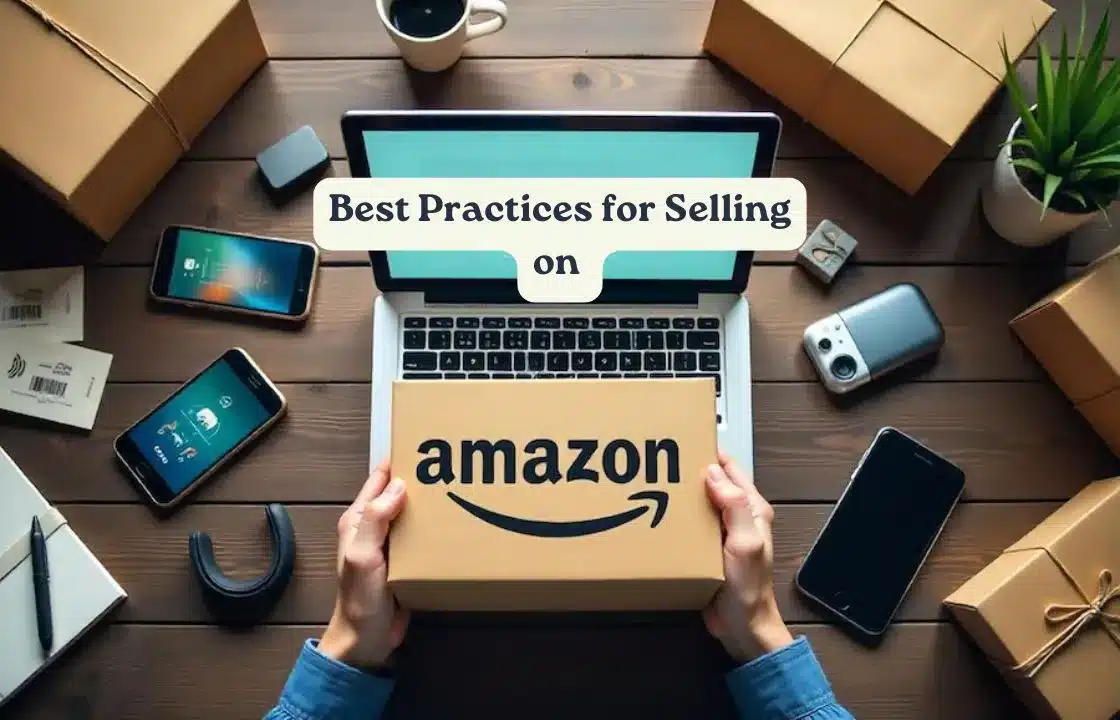
Selling on Amazon has changed the direction of how companies communicate with their customers in all parts of the world. Based on the changing habits of consumer behaviour and the speed at which most countries are adopting online shopping, many companies have included selling on Amazon as part of their business strategy. From private labelling to branded products; on Amazon, new and existing sellers can thrive using the best practices. This blog lays down the process of how to sell on Amazon and build your brand on the site.
How to Sell on Amazon?
Creating a Good Product Catalogue
A well-structured catalogue of the products generates sales. It also enables the consumers to make the right choice while making any purchase. There are a few vital things you need to consider for producing a great catalogue:
Using Quality Images
According to Amazon data, 63% of customers care more about images than product descriptions and reviews. Your product images should be of great quality, and an actual understanding should come from the image of the product. For example, if you are selling jewellery like earrings, your images should show the product from different sides and also place it on a model so that the client can gauge its size and appearance in real-life contexts. Dimensions of the product should be included as well.
Infographics
For a gadget as complicated as a fan or an air conditioner, the use of infographics in communicating what the product does and its essential features is very possible. Infographics summarize top benefits, offer technical specifications, and instruct users on how to use the product.
Product Descriptions
Creating detailed product descriptions is crucial to be able to describe what you are offering. Never make false claims since it gets you negative reviews and, worst still, fines from Amazon. The product title needs to be relevant, concise, and have keywords to make it easily found by the purchaser. It must contain the brand name, type of product and specifications without being too long.
A+ Content for Brand Owners
As a proprietor of a registered trademark brand, you should use A+ Content. This content allows you to build an enhanced brand store on Amazon, which is akin to having a proprietary website for your brand. A+ Content can enhance your conversion rate since you can offer description-based products, comparisons, and other rich media, such as pictures and videos.
Sponsored Products for Increased Visibility
Once you are done with optimizing Amazon listings, you then have to attract customers to your products. This is where the best Amazon marketing tactics come in. Since new products may not surface immediately in Amazon searches, using Amazon’s advertising tools can boost visibility.
Sponsored Product Ads
Sponsored Product Ads allow you to sell the product on Amazon’s search results. Although advertising will probably be more expensive initially, it tends to level out over time as you realize a greater return on investment. There are two ways to run ads:
- Automatic Campaigns: Amazon automatically categorizes your product and shows it to customers who are searching for similar things.
- Manual Campaigns: You can select the keywords to target manually, so you’re sure that people searching for that kind of thing find your listings.
Brand Advertising
If you have a registered brand on Amazon, then you can also make use of Brand Advertising to promote your entire catalogue. Brand Advertising aids in steering shoppers to your brand store on Amazon, so they can browse through your whole product range. That could be very helpful for businesses with more than one product.
Fulfilled by Amazon (FBA) and Amazon Prime
Amongst the Amazon FBA best practices, FBA and the Prime Badge would be very significant. Most Amazon shoppers will purchase products that are Prime-eligible because it ensures quick shipping and on-time customer service.
Benefits of Fulfilled by Amazon (FBA)
- Prime Eligibility: Your products will qualify as Prime when selling through FBA. This automatically gets a badge next to your listing, thus improving the sale of the item. The badge illustrates to customers that your product passes Amazon’s quality checks.
- Third-Party Logistics Management: When selling through FBA, you store your products in Amazon’s fulfilment centres (FCs). Amazon manages the whole logistics process starting from warehousing to packaging, shipping, and customer service.
- Higher Ranking: Products that Amazon FBA fulfils rank higher in searches as they have been known to be more reliable and trustworthy.
Pillars for Success on Amazon
- Hygiene of Product: Your product listing must be complete with all the possible descriptions, high-quality images, and relevant keywords.
- Sponsored Advertising: To reach a larger number of people, investment in advertising at the beginning is suggested.
- Fulfilled by Amazon (FBA): Use Amazon’s fulfilment services to make your products Prime-eligible and build more customer trust.
Other Options to Sell Products on Amazon
There are two primary methods of selling on Amazon. Know Amazon FBA vs FBM to help you set up the appropriate strategy for your business.
- FBA: Amazon dispatches the goods provided by you to its warehouse. After an order gets raised by a customer, Amazon picks and packs the product on your behalf and delivers it to your customer. FBA is best suited for products that are small-sized and light, which sell quickly. Apart from FBA, the sellers also get the facilities of customer care of Amazon, who can answer questions and returns to their advantage. However, the buyers have to pay additional fees for the storage of their inventory every month along with the regular service fees. To maximize profits, it is always best to sell with fast turnover to avoid having products stored in warehouses for too long.
- Fulfillment by Merchant (FBM): In FBM, sellers store and ship the products themselves. In this case, FBM is ideal for bulky or slow-moving products because long-term storage at Amazon’s fulfilment centres is avoided. However, the seller handles every aspect of shipping and customer service, which is time-consuming.
Steps to Get Registered as an Amazon Seller
Provided you’ve performed the following, launching on Amazon as a seller is quite effortless:
- Sign into your Seller Portal: Sign into the Amazon seller Portal with a connected email ID and valid mobile number.
- GST Information: Fill out the given GST number or fill out PAN. Schemes like books are exempt from GST. Similarly, handicraft schemes also do not attract GST.
- Enter Bank Details: You have to have an existing bank account where Amazon can send payments.ss
- List Products: Upload images, descriptions, prices, and specs of the products.
Once you register, you will get access to Seller Central. It is a platform through which Amazon runs their business. Through Seller Central, you:
- Managing Amazon inventory
- Download reports
- Keep track of customer reviews.
- Submit support tickets
Amazon Fulfillment Options
When order fulfilment happens, sellers have three primary options:
- FBA: All functions of storage, shipment, and customer service shall be performed by Amazon. For this, the vendor is allowed to avail of free eligibility of Amazon Prime, fast shipment, and Amazon-trusted customer service. Picking, packing, and storing fees are charged by the seller to the Amazon account.
- Easy Ship: Amazon’s Easy Ship is a midway option for sellers who wish to hand over control of their inventory to Amazon but still have delivery taken care of. In Easy Ship, Amazon arrives to pick up the product directly from the seller’s location and then delivers it to the buyer. In this manner, the seller retains control over packaging and inventory without having to bear high FBA costs.
- Self-Ship: In this method, sellers stock and ship the products through their logistics partners. This is normally used for weighty or oversized products that do not move fast. While self-ship allows a seller to have full control, the merchant has to manage all logistics, including returns.
Cost of Selling on Amazon
When one sells on Amazon, they should be well aware of the costs that apply:
- Referral Fee: Percentage of every sale depending on the category of product.
- Closing Fee: A fee that varies with the price of the product.
- Weight Handling Fee: A fee for shipping the order within Amazon’s logistics network.
Lastly, if you have selected FBA, then there will be charges related to picking, packaging, and storage.
Conclusion
Selling through Amazon can be a very profitable idea if followed with one of the Amazon pricing strategies among others here. From optimizing a catalogue of products with professional images to taking advantage of Sponsored Product Ads and everything else that FBA has to offer, each step will lead to your success. Working on the fundamental pillars of product hygiene, sponsored advertising, and complete inventory management will be enough to give you a fair foothold in the marketplace and see your business expanding. Whether you’re a new seller or an experienced one, these steps hone your journey in the Amazon marketplace success.
